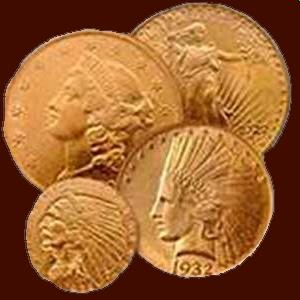








Designed by Nigel G Wilcox






The Paragon Of Metal Detecting
Powered By Sispro1
British Sterling Currency - Numismatics,
Two Pounds
For Reference ONLY
Everything For The Detectorist
Two Pounds
Edward VII 1901-1910 AD
Royal Monarchy
Copyright All Rights Reserved by Nigel G Wilcox E-Mail: ngwilcox100@gmail.com
Pages
Edward VII


Edward VII two pounds were only issued for one year as part of the coronation. Matt proof sets where also issued in 1902. Some Sydney minted sovereigns were produced but they are extremely rare. These sovereigns have a small S mintmark below the horses hoof on the reverse.
1902 Gold,
16 grams,
28mm Diameter.
16 grams,
28mm Diameter.

Melbourne Mint
Two Pound coin was an occasional feature of the British currency from 1823 until 1996, and being minted each year since 1997. With the exception of proof coins issued in 1824, 1825, 1826, and 1831, the design of the reverse always featured the George and Dragon of Benedetto Pistrucci, with the year in the exergue under the design.
The coin was normally issued in cased "proof" condition, although the issues of 1823, 1887, 1893, and 1902 did circulate.
The first appearance of the denomination was in 1820 during the final year of the reign of George III. This rare piece was not struck for circulation but only as a pattern. The obverse shows the bust of king facing right wearing a wreath and bears the legend GEORGIUS III D G BRITANNIARUM REX F D 1820. The reverse has no legend and shows the Pistrucci design.
The coin first appeared as a 'currency' or circulating coin in 1823 during the reign of George IV. The legend on this coin reads GEORGIUS IIII D G BRITANNIAR REX F D. The date and Pistrucci's George and the Dragon appear on the reverse and DECUS ET TUTAMEN ANNO REGNI IV on the edge. The obverse portrait of the king was designed by Jean Baptiste Merlen. This designer is known primarily for his reverses, with the portrait of the 1823 Two Pounds being the only obverse he engraved, using as a basis a model by Sir Francis Chantrey. The elegance of this portrait, compared with Benedetto Pistrucci's portrait for the sovereign, reveals that the choice of designer and engraver was a wise one. Apparently, Pistrucci was unwilling to work from the model of another artist. The quality of the strike was exceptional, producing what some consider to be the most beautiful two pound piece ever produced. The reverse of this coin by Pistrucci has been the basis for the design of this denomination right up to the present day (2009 being the most recent).
The 1824-1826 proof coins features a smaller head of the king, with the legend GEORGIUS IV DEI GRATIA and the date, while the reverse shows a crowned shield within a mantle cape with the legend BRITANNIARUM REX FID DEF. The 1826 coin has the edge inscription DECUS ET TUTAMEN ANNO REGNI SEPTIMO.
The coin was normally issued in cased "proof" condition, although the issues of 1823, 1887, 1893, and 1902 did circulate.
The first appearance of the denomination was in 1820 during the final year of the reign of George III. This rare piece was not struck for circulation but only as a pattern. The obverse shows the bust of king facing right wearing a wreath and bears the legend GEORGIUS III D G BRITANNIARUM REX F D 1820. The reverse has no legend and shows the Pistrucci design.
The coin first appeared as a 'currency' or circulating coin in 1823 during the reign of George IV. The legend on this coin reads GEORGIUS IIII D G BRITANNIAR REX F D. The date and Pistrucci's George and the Dragon appear on the reverse and DECUS ET TUTAMEN ANNO REGNI IV on the edge. The obverse portrait of the king was designed by Jean Baptiste Merlen. This designer is known primarily for his reverses, with the portrait of the 1823 Two Pounds being the only obverse he engraved, using as a basis a model by Sir Francis Chantrey. The elegance of this portrait, compared with Benedetto Pistrucci's portrait for the sovereign, reveals that the choice of designer and engraver was a wise one. Apparently, Pistrucci was unwilling to work from the model of another artist. The quality of the strike was exceptional, producing what some consider to be the most beautiful two pound piece ever produced. The reverse of this coin by Pistrucci has been the basis for the design of this denomination right up to the present day (2009 being the most recent).
The 1824-1826 proof coins features a smaller head of the king, with the legend GEORGIUS IV DEI GRATIA and the date, while the reverse shows a crowned shield within a mantle cape with the legend BRITANNIARUM REX FID DEF. The 1826 coin has the edge inscription DECUS ET TUTAMEN ANNO REGNI SEPTIMO.
Main Coin Menu

VIEW ALL MENUS
Member NCMD
6. S. Menu
























